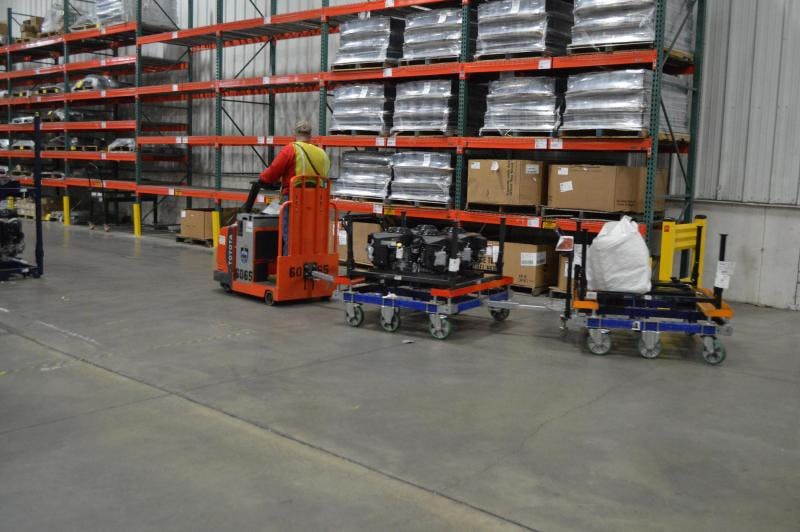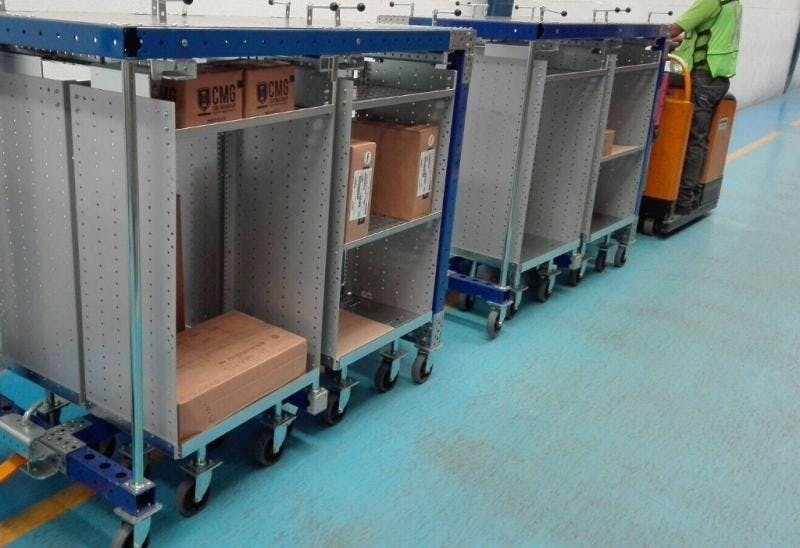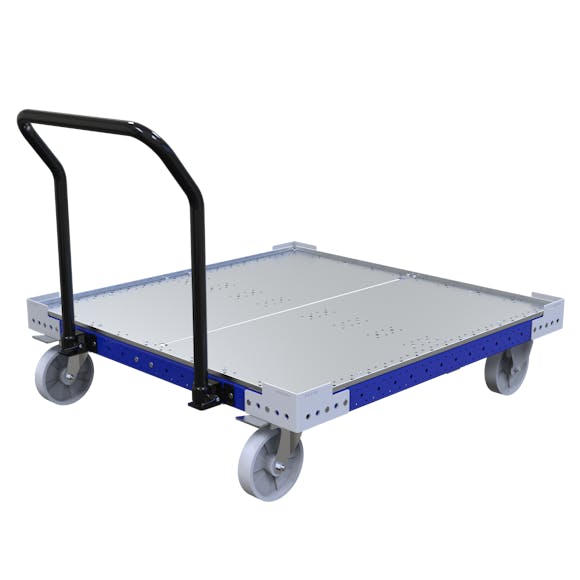Debunking the Top 3 Myths about Tugger Carts in Material Handling

There’s a lot of information out there about tugger carts in material handling that might not exactly be true.
These myths exaggerate ideas about the use of tugger material handling carts that could be holding you back from taking advantage of the significant benefits it can give your business.
Myth #1 – Tugger carts are not safe to use.
It is a common notion that tugger material handling carts are not as safe as forklifts. The fact is that forklifts are actually more hazardous during operations. They are reported to be involved in more incidences of tipping and accidents while driving, thus causing more injuries to the operators and bystanders. Forklifts are also large and space-consuming. Their storage and operations could pose risks to the ground workers as well as to the forklift driver. All other materials and equipment in the places where the forklifts are to be operated should be secured in place. This is to ensure that they will not be accidentally hit or dislodged when the forklift passes by or is being operated nearby.
Tugger carts are, in fact, a safer alternative for a number of reasons. For one, they are modifiable so that they can be adjusted for ease of use for the operator or user. The risk of tripping is also avoided as multiple carts can be interconnected like a train to transport materials. As they are smaller and more compact, it will be easier to make way for its storage and operation.

Myth #2 – Tugger carts are difficult to maneuver.
This misconception may have come from the appearance of tuggers. What you might not know is that the design of these carts can actually be customized depending on the specifications of the business. The final design will depend on considerations such as what it will be used for and the surface or floor type it will be used on. One of the maneuverability features of these carts is pivots. These allow left and right movements in addition to the usual front and back movements—this results in a near-zero turning radius for navigating narrow places and for making U-turns. The carts can also be configured as low profile carts in different sizes or as shelved carts with multiple levels.
![]()
Myth #3 – Tugger carts are space-consuming.
This is not necessarily true as you can choose carts to fit the space considerations in your warehouse or work area. You can even have a set up that’s referred to as the Mother-Daughter system for maximum flexibility. In this configuration, a large tugger cart serves as the Mother cart onto which several other smaller Daughter carts can be loaded. The Mother cart containing the Daughter carts can then be easily transported as one whole unit.

Further flexibility in terms of material handling can be achieved by incorporating levels or shelves into the design of the tugger carts. The number of shelves or the height of each level can be customized depending on the goods that need to be loaded onto the carts.
Tugger carts are useful pieces of equipment in material handling in a wide variety of industries. Here at FlexQube, we have provided a wide range of flexible tugger material handling solutions to the automotive, industrial equipment, warehousing, consumer goods, energy, and defense. It would be a mistake not to consider them for your own business needs. Before you decide on any other type of material handling equipment, consider getting in touch with one of our designers to find out how the FlexQube concept could help you. You will find that these carts are more cost-effective, efficient, and convenient than forklift options. Interested in learning how to start the transition from forklifts to tugger material handling carts, check out this blog post.



